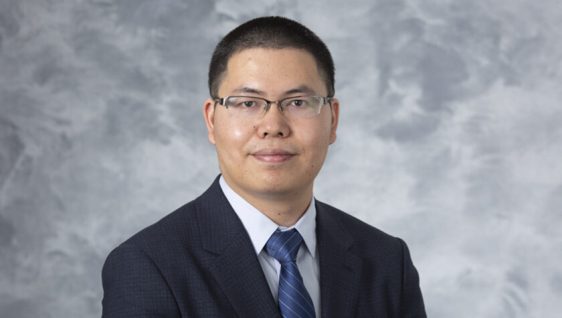Assistant Professor
School of Pharmacy | Department of Pharmaceutical Sciences
Dr. Quanyin Hu is an Assistant Professor at the School of Pharmacy, University of Wisconsin-Madison (UW-Madison). He received his Ph. D. degree in Biomedical Engineering at the University of North Carolina at Chapel Hill (UNC-CH) and North Carolina State University from 2014-2018. Before he joined UW-Madison, he was a postdoc associate at the Koch Institute for Integrative Cancer Research at the Massachusetts Institute of Technology (MIT) from 2018-2020. Dr. Hu is currently serving as the Associate Editor for the Journal of Nanobiotechnology and Young Star Editor for Nano Research. He has published more than 80 research papers, including Nature Biomedical Engineering, Science Translational Medicine, Science Advances and Nature Communications, with over 10,000 citations. Dr. Hu is recognized as the UW-Madison Early Career Young Innovator, 2023 Controlled Release Society (CRS) Immuno Delivery Focus Group Young Investigator, 2023 BMES-CMBE Rising Star Junior Faculty, 2023 Journal of Nanobiotechnology Rising Star, 2022 iCANX Young Scientist, 2022 Clarivate Highly Cited Researchers, 2022 Badger Challenge Scholar, The World’s Top 2% Scientists (since 2019), 2022 Emerging Investigator in the Journal of Materials Chemistry B, Finalist of Wisconsin Alumni Research Foundation (WARF) Innovation Award, etc., and won METAvivor Foundation Early Career Investigator Award, 2022 Fall Research Competition Award from VCRGE at UW-Madison, Outstanding Editor Award for Journal of Nanobiotechnology, BMES Career Development Award, etc.
A speaker fee applies for Dr. Hu’s talk.
Talks:
Engineering cells for biomedical applications
Immunotherapy is leading a paradigm shift in the treatment of various diseases, including cancer. However, the limited objective response rate and side effects impede the clinical applications of immunotherapy. As important biological entities and natural carriers for proteins and molecules, cells with low immunogenicity and toxicity have attracted considerable attention for biomedical applications and have achieved encouraging progress, especially in tumor immunotherapy. The convergence of multiple disciplines has equipped cell engineering with control over their spatiotemporal distribution to enhance treatment efficacy and reduce side effects. In this talk, I will introduce our recent efforts in engineering cells for biomedical applications.
